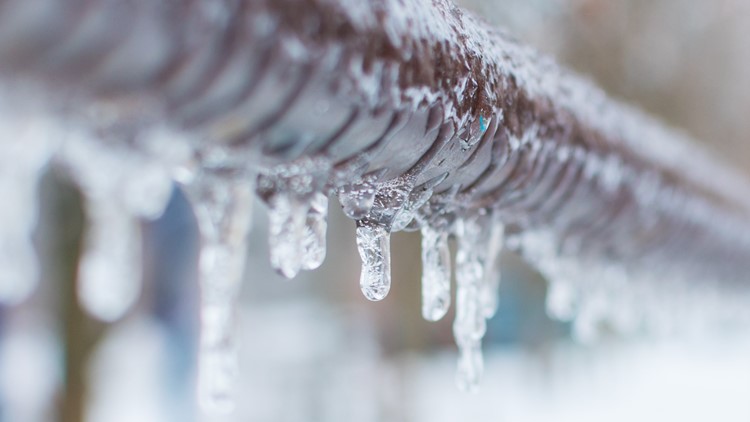Essential Tips to Avoid Frozen Plumbing in Winter: Specialist Guidance
Essential Tips to Avoid Frozen Plumbing in Winter: Specialist Guidance
Blog Article
Are you currently hunting for suggestions about Prevent Frozen Pipes ?

Winter can ruin your plumbing, particularly by freezing pipelines. Right here's how to stop it from occurring and what to do if it does.
Intro
As temperature levels drop, the threat of frozen pipelines boosts, possibly resulting in costly repair services and water damages. Comprehending just how to prevent frozen pipelines is essential for house owners in cool climates.
Prevention Tips
Protecting at risk pipelines
Cover pipelines in insulation sleeves or use heat tape to secure them from freezing temperature levels. Concentrate on pipes in unheated or external areas of the home.
Home heating strategies
Keep indoor areas effectively heated up, especially locations with pipes. Open up closet doors to enable warm air to distribute around pipes under sinks.
Just how to recognize frozen pipes
Try to find reduced water flow from faucets, unusual odors or sounds from pipes, and noticeable frost on subjected pipes.
Long-Term Solutions
Structural changes
Consider rerouting pipes away from outside wall surfaces or unheated locations. Include additional insulation to attics, basements, and crawl spaces.
Upgrading insulation
Invest in top notch insulation for pipes, attic rooms, and walls. Appropriate insulation aids maintain constant temperature levels and decreases the danger of icy pipelines.
Protecting Outside Plumbing
Yard pipes and exterior taps
Separate and drain pipes yard tubes prior to wintertime. Set up frost-proof spigots or cover exterior faucets with insulated caps.
Recognizing Frozen Pipelines
What causes pipelines to freeze?
Pipelines freeze when revealed to temperatures listed below 32 ° F (0 ° C) for prolonged durations. As water inside the pipes freezes, it increases, putting pressure on the pipeline wall surfaces and potentially triggering them to break.
Risks and damages
Icy pipelines can lead to water disruptions, building damage, and expensive repair services. Ruptured pipelines can flood homes and trigger substantial architectural damages.
Indications of Frozen Water Lines
Recognizing icy pipes early can prevent them from breaking.
What to Do If Your Pipelines Freeze
Immediate activities to take
If you presume frozen pipes, maintain faucets open up to ease stress as the ice thaws. Utilize a hairdryer or towels soaked in warm water to thaw pipelines slowly.
Verdict
Stopping icy pipelines needs proactive measures and fast responses. By recognizing the causes, indicators, and preventive measures, homeowners can secure their pipes during winter.
6 Proven Ways to Prevent Frozen Pipes and Protect Your Home
Disconnect and Drain Garden Hoses
Before winter arrives, start by disconnecting your garden hoses and draining any remaining water. Close the shut-off valves that supply outdoor hose bibs and leave the outdoor faucet open to allow any residual water to drain. For extra protection, consider using faucet covers throughout the colder months. It’s also important to drain water from any sprinkler supply lines following the manufacturer’s directions.
Insulate Exposed Pipes
Insulating your pipes is an effective way to prevent freezing. Pipe insulation is readily available at home improvement stores and is relatively inexpensive. Pay close attention to pipes in unheated areas such as the attic, basement, crawl spaces, or garage. Apply foam insulation generously to create a buffer against the cold. You can also wrap your pipes in heat tape or thermostat-controlled heat cables for added warmth.
Seal Air Leaks
Inspect your home for any cracks or openings that could let in cold air. Seal any holes around the piping in interior or exterior walls, as well as the sill plates where your home rests on its foundation. Additionally, make sure to keep your garage door closed unless you’re entering or exiting. Leaving it open creates a significant air leak that can lead to frozen pipes.
Allow Warm Air Circulation
During cold snaps, it’s essential to allow warm air to circulate evenly throughout your home. Leave interior doors ajar to promote better airflow. Open kitchen and bathroom cabinets to help distribute heat consistently around the rooms. If you have small children or pets, be sure to remove any household chemicals or potentially harmful cleaners from open cabinets for safety.
Let Faucets Drip
A small trickle of water can make a big difference in preventing ice formation inside your pipes. When temperatures drop significantly, start a drip of water from all faucets served by exposed pipes. This continuous flow helps prevent the water from freezing. Additionally, running a few faucets slightly can relieve pressure inside the pipes, reducing the chances of a rupture if the water inside does freeze.
https://choateshvac.com/6-proven-ways-to-prevent-frozen-pipes-and-protect-your-home/

As a person who reads on Prevent Frozen Pipes , I assumed sharing that post was worth the trouble. Those who enjoyed our post please make sure you remember to share it. Many thanks for being here. Please come visit our blog back soon.
Call Today Report this page